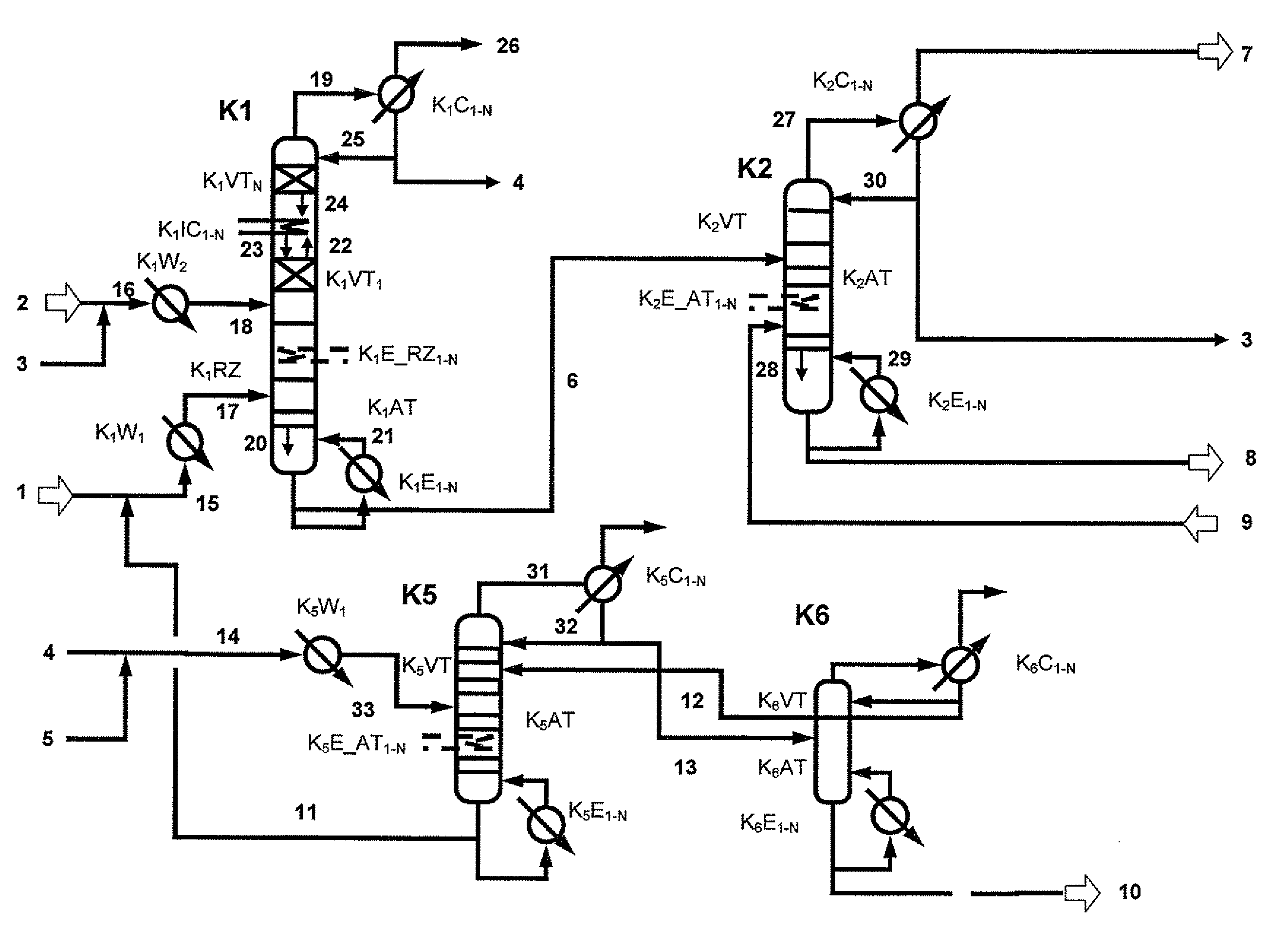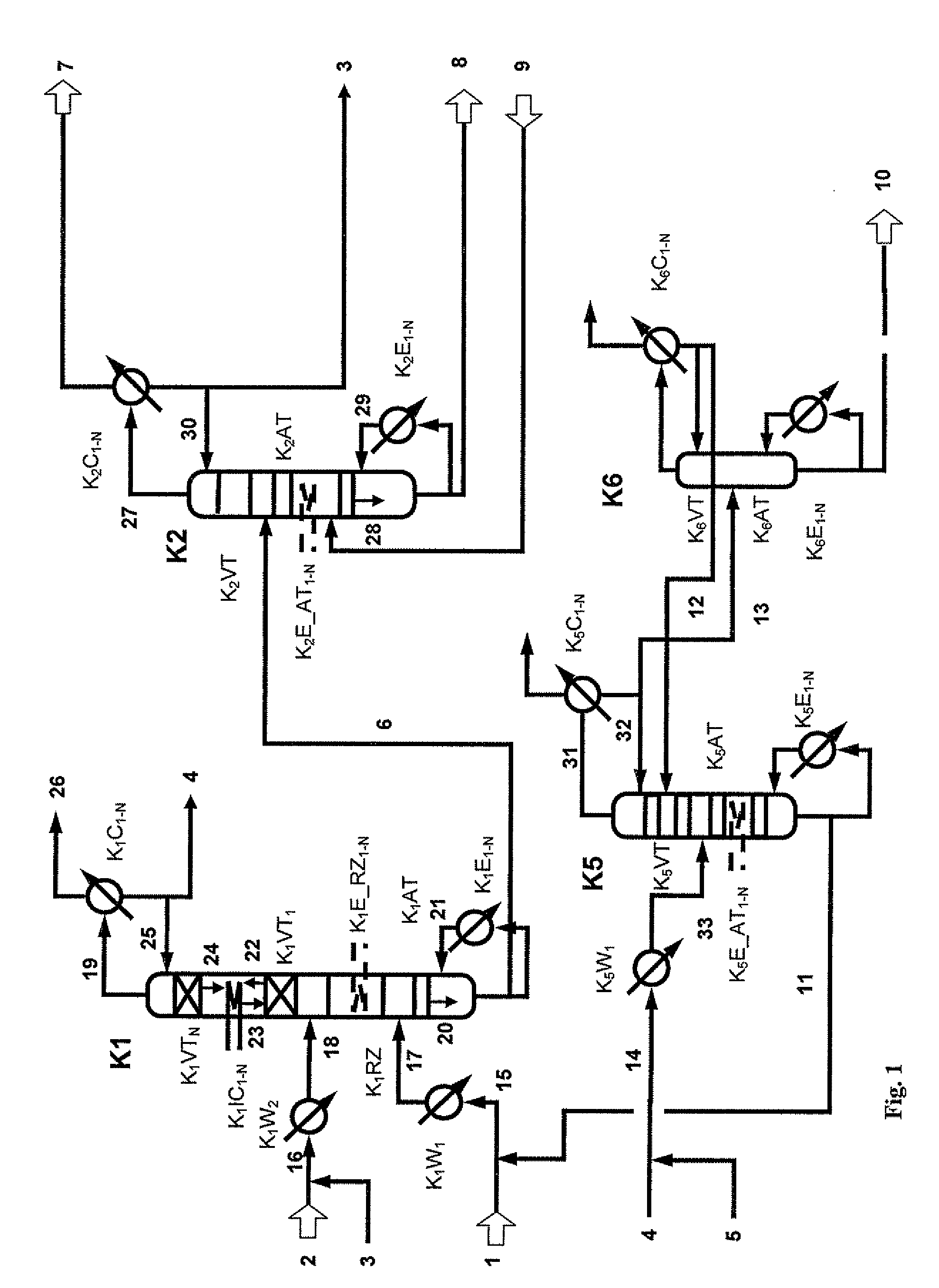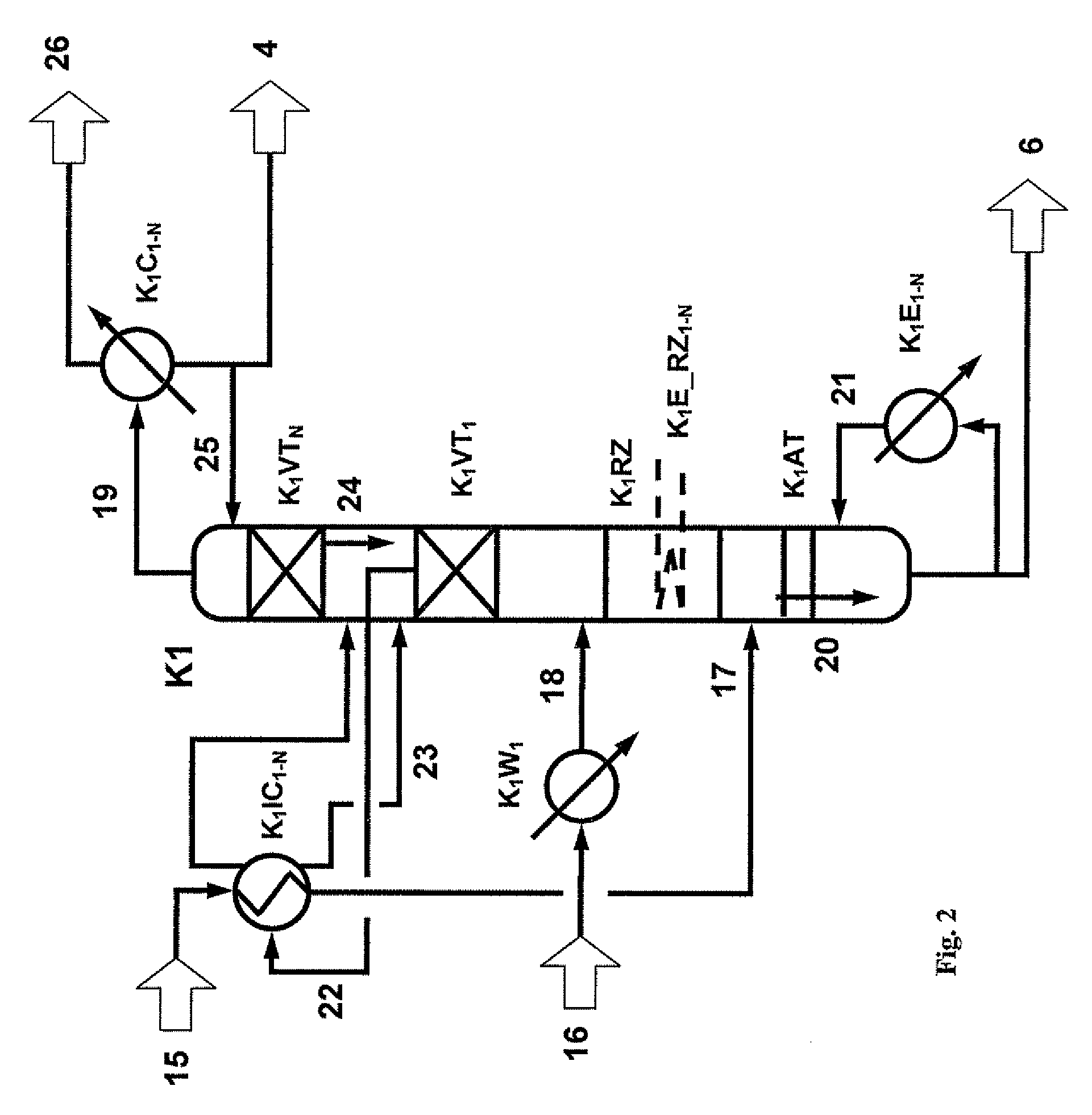Processes for preparing diaryl and/or alkylaryl carbonates from dialkyl carbonates
a technology of dialkyl carbonate and diaryl carbonate, which is applied in the field of processes for preparing diaryl and/or alkylaryl carbonates from dialkyl carbonates, can solve the problems of inability to choose optimal reaction conditions for the formation of alkylaryl or diaryl carbonates, inability to give information regarding the manner or extent to which heat produced in this process can be further used, and inability to achieve the effect of reducing energy consumption
- Summary
- Abstract
- Description
- Claims
- Application Information
AI Technical Summary
Benefits of technology
Problems solved by technology
Method used
Image
Examples
example 1
According to the Invention
[0234]In a first reaction column comprising[0235]an upper rectifying section (KIVT2) having 4 theoretical stages,[0236]an intermediate condenser (K1IC1),[0237]a lower rectifying section (K1VT1) having 4 theoretical stages,[0238]a reaction zone (K1RZ) having 30 reaction plates (hold-up: 12 l), 3 plates being equipped with heating elements (K1E_RZ1-3), and[0239]a stripping section K1AT having 6 plates (hold-up: 12 l), 400 kg / h of a mixture of 85.4 wt. % phenol, 9.2 wt. % dimethyl carbonate, 3.2 wt. % diphenyl carbonate, 1.5 wt. % titanium tetraphenolate, 0.3 wt. % anisole, 0.3 wt. % methylphenyl carbonate and 0.1 wt. % methanol are fed at the top end of the reaction zone. At the bottom end of the reaction zone, 539.6 kg / h of a vapor mixture, superheated by 5° C., of 98.8 wt. % dimethyl carbonate, 0.9 wt. % phenol, 0.2 wt. % anisole and 0.1 wt. % methanol are fed in.
[0240]456.9 kg / h of a product mixture consisting of 51 wt. % phenol, 27.3 wt. % MPC (124.7 kg / h...
example 2
According to the Invention
[0263]Under otherwise identical conditions as in Example 1, the first reaction column is operated without an intermediate condenser.
[0264]By the heat integration of the second reaction column with the separation of the methanol / dimethyl carbonate mixture, the heating agent requirement for the separation of methanol and dimethyl carbonate can likewise be reduced from 76 kW to 13 kW, that is to say by 83%, however. At the same time, the cooling agent requirement of the second reaction column is reduced from 64 to 1 kW, that is to say by 98.4%.
[0265]Consequently, it is possible to make a considerable saving in terms of energy using the process according to the invention.
PUM
| Property | Measurement | Unit |
|---|---|---|
| pressure | aaaaa | aaaaa |
| temperature | aaaaa | aaaaa |
| pressure | aaaaa | aaaaa |
Abstract
Description
Claims
Application Information
 Login to View More
Login to View More - R&D
- Intellectual Property
- Life Sciences
- Materials
- Tech Scout
- Unparalleled Data Quality
- Higher Quality Content
- 60% Fewer Hallucinations
Browse by: Latest US Patents, China's latest patents, Technical Efficacy Thesaurus, Application Domain, Technology Topic, Popular Technical Reports.
© 2025 PatSnap. All rights reserved.Legal|Privacy policy|Modern Slavery Act Transparency Statement|Sitemap|About US| Contact US: help@patsnap.com



